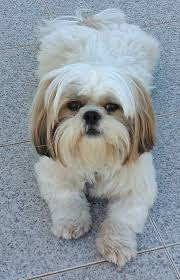Shih Tzu Dog From Tibet to Chinese Royalty
Introduction:
Originally from Tibet, China, the Shih Tzu is a tiny dog breed. The name of the animal means "lion dog" in Chinese. Shih Tzu history dates back to antiquity and is frequently linked to Tibetan Buddhism and Chinese aristocracy.
The Tibetan monastery dogs, who were raised by Tibetan monks as early as 800 BC, are thought to be the forebears of the Shih Tzu. These canines were revered and treated as sacred animals. They were frequently given as gifts to Chinese emperors and other nobles because they were thought to bring good luck.
China's Ming Dynasty, which lasted from 1368 to 1644, is when the Shih Tzu was selectively bred and developed into its modern form. A beloved lap dog and companion, the breed gained popularity in the Chinese royal court. Shih Tzus were lavished with care and attention by the Chinese royal family because of their high regard for them.
Due to political unrest in China, the Shih Tzu experienced a difficult time at the beginning of the 20th century. The breed was on the verge of extinction as its population shrank. By carefully breeding the remaining puppies, a few devoted breed aficionados did, nevertheless, manage to keep the Shih Tzu breed alive.
When a few dogs were transported to England in the 1930s, the Shih Tzu was introduced to other countries. The Kennel Club (UK) recognized the breed formally in 1934 after it had achieved popularity and recognition. The Shih Tzu eventually arrived in the US, where it was recognized by the American Kennel Club (AKC) in 1969.
The Shih Tzu is a well-liked companion dog today, distinguished by its unusual appearance, long flowing coat, and amiable disposition. It is a beloved breed that is well-known throughout the world for its endearing character and loving disposition.
Unique qualities that add to its distinctive appearance:
Shih Tzus are little dogs that normally weigh between 4 and 7 kilograms (9 to 16 pounds) each. They stand between 8 and 11 inches (20 and 28 centimeters) tall at the shoulder, with a strong and balanced body shape.
Long, Luxurious Coat: The Shih Tzu is known for its long, flowing double coat, which is one of its most distinctive characteristics. While the inner coat is soft and fuzzy, the outside coat is luxuriously dense and thick. To avoid matting and maintain its attractive appearance, their hair must be regularly groomed as it grows continuously.
Shih Tzus have a characteristically round, flat face and a broad cranium. Their expressive and charming appearance is a result of their huge, round, black eyes that are spaced widely apart. The breed's distinctive face form is a result of its short, square muzzle.
The hair on the Shih Tzu's head is frequently wrapped up in a topknot or fastened with a bow. Their lovely beauty is enhanced by the topknot, which also prevents hair from getting in their eyes.
The lower jaw of Shih Tzus protrudes somewhat more forward than the top jaw, a feature known as an underbite. This trait is distinctive to the breed and contributes to their allure.
Plumed Tail: The Shih Tzu's tail is coated in a thick plume of hair and is carried high over its back. Their entire appearance is made more elegant by the fact that the tail is typically carried curled.
Key elements of Shih Tzu upkeep and care include:
Shih Tzus need regular grooming because of their long, flowing coats, which they need to keep tidy and untangled. To avoid matting and eliminate stray hairs, brush their coat every day. For optimum coat health and aesthetics, professional grooming should be performed every 4 to 6 weeks. Their facial region should also be routinely cleansed, and any signs of infection in their eyes and ears should be looked for.
Shih Tzus need to be bathed frequently, usually every three to four weeks. To maintain your dog's coat clean and healthy, use a gentle, dog-specific shampoo and conditioner. Avoid getting water in their ears, as this can cause ear infections.
Hair care: To keep the hair from scratching the Shih Tzu's eyes, it should be tied back or cut. To prevent hair from falling into their faces, some owners choose a topknot. For hygiene reasons, it is also vital to regularly trim the hair on the anus' paw pads.
Exercise is necessary for Shih Tzus to maintain a healthy weight and overall well-being even if they are low-energy canines. They can be kept physically and mentally active by daily walks, games, and interactive toys.
Nutrition: Feed your Shih Tzu a high-quality, well-balanced dog food that is appropriate for their age, size, and level of exercise. To discover the proper portion sizes and feeding plan for your dog, consult a veterinarian. Shih Tzus can be prone to weight gain, so avoid overfeeding.
Veterinary Care: To protect your Shih Tzu's health, routine veterinary examinations are essential. Make appointments for yearly physicals, dental cleanings, and routine exams. Maintain current knowledge on heartworm and flea/tick prevention.
Establishing a dental care routine is crucial since Shih Tzus are prone to dental problems. Regularly wash their teeth using a dog-specific toothbrush and toothpaste that has been approved by your veterinarian.
Eye Care: Shih Tzus are susceptible to eye issues because of their large, expressive eyes. Keep their eyes clean by using an eye cleaning solution your veterinarian has recommended or gently wiping them with a wet cloth.
Shih Tzus thrive on human company and attention, thus they need emotional care. Spend quality time with your dog, provide them toys or engaging games to keep their minds engaged, and make sure they have a cozy and safe place to live.
NB:
Keep in mind that each Shih Tzu is different, and their particular needs may vary. For specific advice on how to take care of and maintain your Shih Tzu, it is always advisable to speak with a veterinarian or a qualified dog groomer.










0 Comments